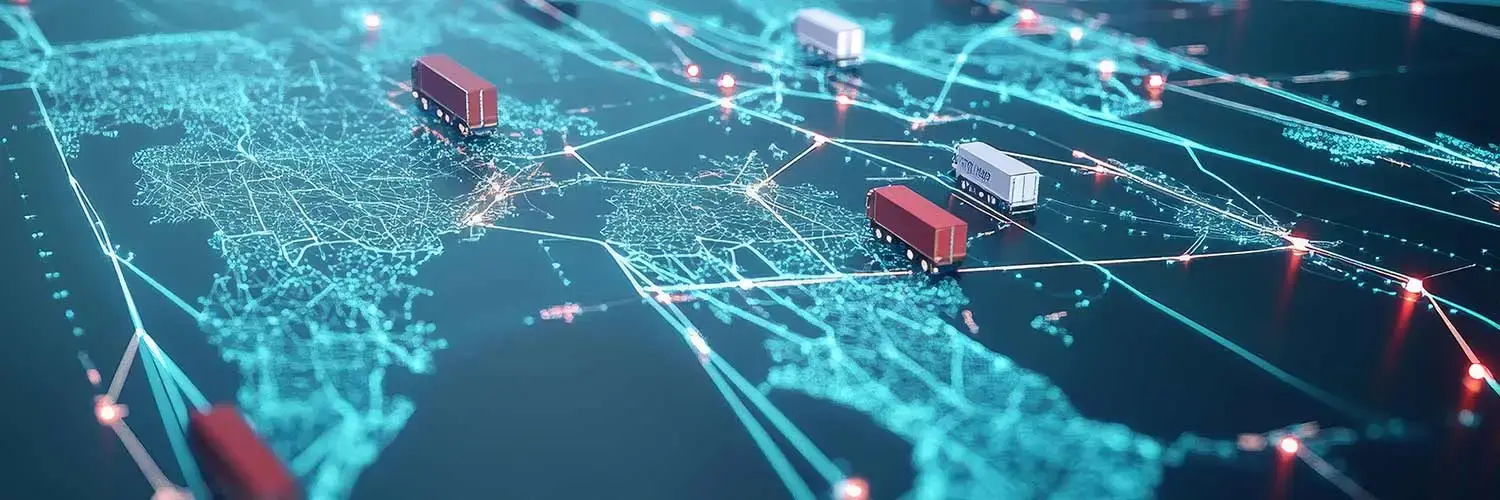Navigating the Seas: The 5 Busiest Shipping Routes to Watch in 2024
When it comes to international trade, the global shipping industry plays a key role, facilitating the transportation of a vast majority of goods across the world's oceans. As trade volumes continue to grow in 2024, understanding the busiest ocean freight routes is crucial for businesses involved in international logistics. These key shipping lanes help facilitate global commerce, connect economies, and ensure that goods reach consumers efficiently.
In this blog, we will take a detailed look at the five busiest shipping routes of 2024, discussing their significance and the challenges associated with each.
1. The Asia-Europe Route: A Backbone of Global Trade
Why the Asia-Europe Route is Crucial
The Asia-Europe route, also known as the Far East Europe route, connects major Asian production centers like China, Japan, and South Korea with European consumer markets. This route is essential for the shipment of electronics, automobiles, textiles, and a wide range of manufactured goods.
Key Ports and Shipping Hubs
Major Asian ports such as Shanghai, Singapore, and Shenzhen are pivotal to this route, while European ports like Rotterdam, Hamburg, and Antwerp handle incoming cargo. In 2024, traffic on this route is expected to increase due to growing e-commerce demand and the need for quicker delivery times.
Challenges of the Route
While highly efficient, this route faces challenges, such as port congestion in Europe and the environmental concerns surrounding high traffic. Increased fuel costs and carbon emission regulations will continue to shape this route's operational dynamics, impacting international ocean freight supply chains.
2. The Trans-Pacific Route: U.S. and Asia Connection
The Role of the Trans-Pacific Route in Global Trade
The Trans-Pacific route is a crucial shipping lane linking Asia with North America, particularly the United States. It is responsible for the movement of consumer goods, electronics, automobiles, and industrial machinery.
Traffic Surge in 2024
In 2024, this route is facing heightened traffic due to growing consumer demand in the U.S. and the increase in U.S. imports from Asia. The ports of Los Angeles, Seattle, and Long Beach, remain key hubs for goods arriving from Chinese ports like Shanghai and Ningbo.
Environmental and Logistical Concerns
With the growing volume of cargo, the Trans-Pacific route is likely to experience bottlenecks and capacity challenges. To address sustainability concerns, the shipping industry is adopting greener technologies, such as fuel-efficient vessels and alternative energy solutions.
Learn more about how ocean consolidation services can optimize your shipments along such congested routes.
3. The Suez Canal: A Vital Shortcut for Global Shipping
The Strategic Importance of the Suez Canal
The Suez Canal connects the Mediterranean Sea to the Red Sea, providing a critical shortcut for ships traveling between Europe and Asia. Without the canal, ships would need to take a longer route around the southern tip of Africa, significantly increasing travel time by several weeks.
Increased Traffic and Trade Volumes
As global trade volumes increase, the Suez Canal remains a key artery for shipping traffic, handling around 12% of global trade. The canal's strategic importance has grown since its expansion in 2015, allowing for larger vessels and more efficient cargo flow.
Recent Developments and Challenges
In 2024, the canal will continue to face pressures from high shipping volumes. Geopolitical stability in the surrounding region is critical for maintaining the smooth operation of this vital waterway, affecting shipping route traffic and cargo movement and logistics.
4. The Panama Canal: A Gateway to the Americas
Connecting Oceans and Facilitating Trade
The Panama Canal acts as a vital connection between the Atlantic and Pacific Oceans, enabling smooth passage for ships traveling from Asia to the U.S. East Coast. This route is essential for the movement of consumer goods, raw materials, and oil.
Expanding Capacity and Environmental Impact
The Panama Canal Authority has been making investments to expand the canal's capacity, allowing it to accommodate larger vessels, which will help alleviate some of the congestion expected in the last quarter of 2024. Additionally, the focus on reducing environmental impact and adopting sustainable shipping practices will continue to shape the future of this route.
Future Prospects
With the expansion of the canal and the increase in vessel size, the Panama Canal is expected to play a more significant role in global shipping in 2025. However, rising environmental standards and water shortages due to climate change could pose challenges for logistics and consolidation services.
5. The Strait of Malacca: Southeast Asia's Critical Passage
A Key Trade Route for Energy and Commodities
The Strait of Malacca, located between the Malay Peninsula and the Indonesian island of Sumatra, is one of the world's busiest shipping lanes, facilitating the movement of energy resources and commodities between the Indian Ocean and the South China Sea.
Navigating the Narrow Passage
Handling about 25% of the world's traded goods, the strait is critical for global oil and gas transportation. However, its narrowness makes it vulnerable to congestion and piracy risks. In 2025, the strait is expected to witness an increase in traffic due to growing demand from Southeast Asian economies and China.
Strategic Importance and Security Concerns
Ensuring the safety and security of vessels passing through the Strait of Malacca will remain a priority for international shipping companies. The route's strategic importance will only grow as Southeast Asia continues its rapid economic development, impacting shipping industry trends and freight shipping services.
Navigating Challenges with Ocean Consolidation Services
As global shipping volumes increase and major shipping routes become more congested, businesses must find ways to navigate these challenges efficiently. One effective solution is ocean consolidation services, which allow companies to combine multiple shipments into a single container. This not only reduces shipping costs but also optimizes space and minimizes delays.
For more information on international shipping trends and the services we offer, visit our homepage and discover how Dynamic World-Wide Logistics Group can help streamline your logistics.



















